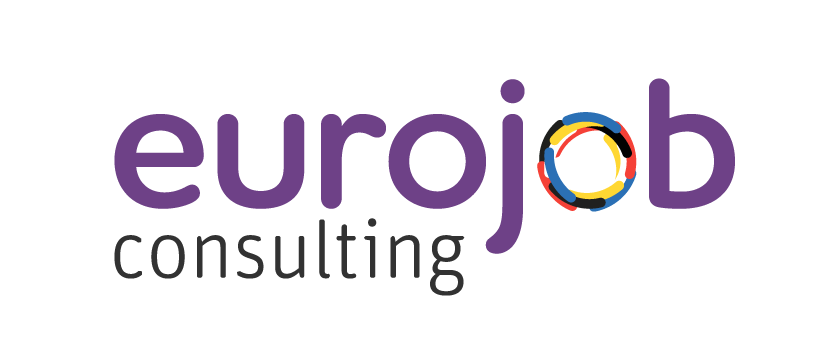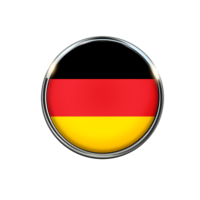LinkedIn recruitment success in Germany: The newest strategies

LinkedIn continues to be a crucial platform for reaching skilled professionals across various industries, from engineering and IT to finance and healthcare. This guide will provide you with actionable insights and proven strategies to help your company effectively recruit and find candidates in Germany using LinkedIn, ensuring that your efforts yield successful outcomes in this dynamic market.
2. Optimizing your company LinkedIn profile
3. Navigating cultural nuances in German recruitment
4. Effective strategies for finding candidates on LinkedIn
5. Leveraging LinkedIn ads for targeted recruitment

Understanding the German job market is essential before launching any recruitment campaign on LinkedIn. Germany has a highly skilled workforce, with a strong emphasis on technical and engineering roles, but the market also values soft skills and cultural fit. The demand for talent in sectors such as IT, engineering, healthcare, and finance is particularly high.
To recruit effectively, you need to be aware of the labor market regulations and trends. For instance, Germany has a well-established apprenticeship system, which produces highly qualified professionals in various fields. This system often influences the type of candidates available on the market. Additionally, the country's employment laws are strict, particularly regarding contracts, work hours, and employee rights, which means that clear communication about job expectations and conditions is crucial.
Moreover, it's important to understand that Germany has a regionalized job market. Cities like Berlin, Munich, Hamburg and Frankfurt attract different kinds of professionals. Berlin, for example, is known for its vibrant startup scene, with companies like Zalando and N26 leading the way, while Munich is a hub for automotive and engineering sectors, home to giants like BMW and Siemens. Tailoring your recruitment approach to these regional differences can significantly enhance your success rate.
"To recruit effectively, you need to be aware of the labor market regulations and trends. For instance, Germany has a well-established apprenticeship system, which produces highly qualified professionals in various fields."
Lea Orellana-Negrin
Recruiter
Eurojob-Consulting

A well-optimized LinkedIn profile is the foundation of successful recruitment on the platform. German candidates often prefer to work for companies that are well-established and have a strong online presence. To attract these candidates, your company profile should be professional, complete, and reflective of your company culture.
Start by ensuring that your company page is fully updated with all relevant information. This includes a detailed “About Us” section, showcasing your mission, values, and the industries you operate in. Highlight any awards, certifications, or partnerships that enhance your credibility in the German market. For example, if your company has received a Top Employer Germany award, make sure this is visible on your profile. Companies like SAP do an excellent job of showcasing their achievements and culture on their LinkedIn profiles.
Another important aspect is the careers section on your LinkedIn page. This is where candidates will first look for job openings. Ensure that each job listing is clearly written, with precise job descriptions that include the required qualifications, responsibilities, and what your company offers. In Germany, transparency is key, so be upfront about salary ranges, benefits, and working conditions. For instance, companies like Deutsche Telekom are known for being clear and transparent in their job postings.
Finally, make sure that your company's posts are engaging and relevant to the audience. Share industry news, insights, and employee testimonials to build your brand and connect with potential candidates. Regularly posting in German or providing bilingual content can also demonstrate your commitment to the local market.
Understanding cultural nuances is critical when recruiting in Germany. The German business culture values punctuality, reliability and clear communication. When engaging with candidates on LinkedIn, these values should be reflected in your interactions.
When reaching out to potential candidates, avoid overly casual language. Germans tend to prefer a more formal approach, especially in the initial stages of communication. Addressing candidates by their last name and using polite forms of address (such as "Herr" or "Frau") shows respect and professionalism.
For example, when contacting a candidate working at BASF, starting with a formal greeting like "Sehr geehrter Herr Müller" (Dear Mr. Müller) will likely create a better impression than using a casual "Hi" or "Hello."
German professionals typically appreciate detailed information. When discussing a job opportunity, provide comprehensive details about the role, the company, and the application process. Germans are also known for their directness, so be prepared for straightforward questions and provide clear, honest answers.
It's also important to consider the work-life balance that is highly valued in Germany. Emphasize how your company respects and promotes a healthy balance between work and personal life. Highlighting benefits such as flexible working hours, remote work options, and family-friendly policies, similar to what Siemens offers, can make your company more attractive to German candidates.

To successfully recruit in Germany via LinkedIn, you need to employ effective strategies that resonate with the local audience. One of the most powerful tools on LinkedIn is the Advanced Search feature. By using filters such as location, industry, and experience level, you can narrow down your candidate search to those who meet your specific requirements.
In addition to standard searches, consider leveraging LinkedIn's Talent Insights tool. This tool provides valuable data on talent pools, including where they are most concentrated, what skills are most in demand, and how competitive the market is. This information can help you tailor your recruitment strategies to target the right candidates. For instance, if you're recruiting for IT roles, Talent Insights might show that Munich has a higher concentration of professionals with expertise in software development compared to other regions.
Another effective approach is to join and actively participate in LinkedIn Groups related to your industry. These groups are often populated by professionals who are passionate about their field, making them a great place to find motivated candidates. For example, joining groups like German Engineers or IT Professionals in Germany can connect you with high-quality candidates. Engage in discussions, share content, and connect with group members to build relationships that can lead to recruitment opportunities.
Lastly, consider reaching out to passive candidates - those who may not be actively looking for a job but would be open to the right opportunity. Personalized messages that highlight why your company is a great fit for their skills and career goals can be very effective in capturing the interest of these candidates.
LinkedIn Ads offer a powerful way to target specific demographics, industries, and regions, making them an excellent tool for recruiting in Germany. By creating targeted ads, you can reach a wider audience, including those who may not actively be searching for a new job but fit your ideal candidate profile.
When creating LinkedIn Ads, it's crucial to craft messages that resonate with German professionals. Highlight the aspects of your job offers that align with the values and expectations of the German workforce, such as job security, growth opportunities, and work-life balance. Using the LinkedIn Campaign Manager, you can target ads based on criteria like location, job title, industry, and even specific skills.
If you're hiring in the automotive sector, you might target professionals in cities like Stuttgart, home to companies like Porsche and Mercedes-Benz. You can also specify the level of experience required and focus on candidates who have a background in engineering or project management.
Consider using Sponsored Content to promote your job postings and company culture. This type of content appears directly in the LinkedIn feed of your target audience, increasing visibility and engagement. To enhance your campaigns' effectiveness, use A/B testing to experiment with different ad formats and messaging to see what works best with your audience.
Don't overlook the power of employee advocacy. Encourage your employees to share job postings and company content on their LinkedIn profiles. This not only amplifies your reach but also adds a layer of authenticity, as potential candidates are often more receptive to messages coming from individuals rather than companies. Companies like Allianz effectively use employee advocacy to promote their brand and job opportunities.
By following these strategies, your company can successfully recruit top talent in Germany using LinkedIn. Remember, the key to success is understanding the local market, optimizing your LinkedIn presence, respecting cultural differences, and using the platform's tools effectively. Good luck!

Jérôme Lecot




